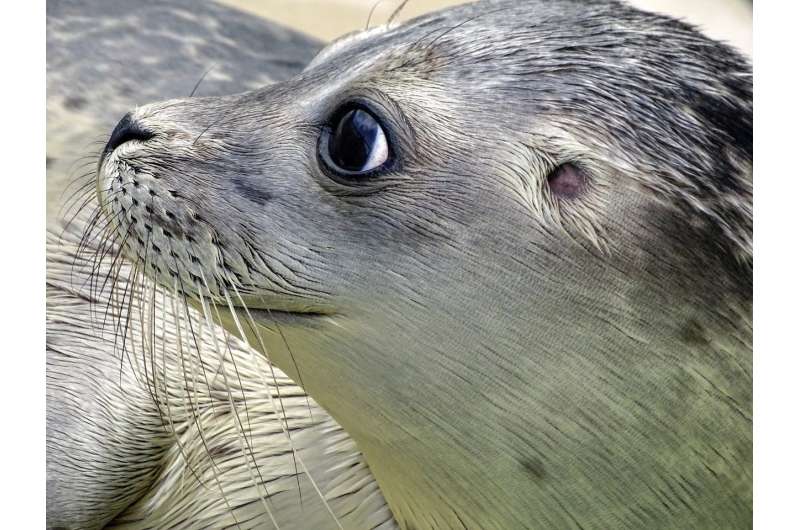Seal's sensitive whiskers hold key to foiling fish escapes

Sadie Harley
scientific editor

Robert Egan
associate editor

Life beneath the waves can be a game of cat and mouse. Seals pursue swimming fish by following the tell-tale wakes and spinning vortices they leave behind, sensing the faint swirls with their sensitive whiskers. But fish might have a trick up their sleeves.
Yvonne Krüger from University of Rostock, Germany, explains that escaping fish produce three jets of different sizes as they dart away, squirting in individual directions almost simultaneously—at least two of which form into vortex rings, like smoke rings—which could confuse a seal. But might seals be able to see through the deception?
"The seal will have a better chance of guessing a fish's escape direction if it can tell the difference between the two vortex rings," says Wolf Hanke. To do this, the seals' whiskers would need to detect size differences of tens of millimeters between the two spinning vortex rings. But was that possible?
Krüger, Hanke, Lars Miersch and Guido Dehnhardt (University of Rostock) publish their discovery that seals can detect differences in the width of vortex rings in wakes of just 17.6mm using their whiskers alone, which could help them to detect a fleeing fish's direction, in the
First, the team taught a harbor seal (Phoca vitulina) named Filou, who lived at the Marine Science Center, Rostock, to submerge his head while blindfolded as they released a spinning vortex ring from a piston positioned to one side of the seal's head, occasionally visualizing the vortex ring with uranine dye in the water. Then, shortly after, they released a smaller or larger vortex ring on the other side.
Filou had to decide which of the vortex rings was larger based only on the feeling as the water swirled across his whiskers, tapping one of two green balls on either side of his head to let the scientists know which side had produced the larger vortex ring and receiving a fish reward when he was correct. "It took him quite a while to grasp the concept of different vortex ring size," says Krüger.
Initially, the team tested Filou's ability to differentiate between vortex rings ranging in size from 89.9 mm, down to 45.8 mm—with a smallest difference of just 17.6 mm—and Filou was remarkably successful (well above 80%), correctly selecting the side with the largest vortex using only his whiskers.
But to be sure that Filou really could distinguish between vortices of different size, Krüger changed the way that the vortices were paired, so that one of the smaller vortices (68.0 mm)—which Filou had ignored previously—became the larger vortex. And he still picked it out.
After months of patience and thousands of trials switching between vortices, Krüger and colleagues were convinced that harbor seals are capable of distinguishing between vortex rings that differ in size by as little as 17.6 mm using their sensitive whiskers.
But what does this mean for fleeing fish? As the second jet produced by an escaping fish—which squirts in the opposite direction from the fish's travel—is accompanied by a larger vortex ring and Filou can distinguish between jet vortices that differ by just 17.6 mm, Krüger and colleagues think that it is very likely that seals can see through the fish's attempted evasion.
The seals' sensitive whiskers could simply detect the largest spinning vortex generated as fish attempted to flee and dive in the opposite direction to outmaneuver and foil a fishy escape.
More information: Krüger, Y., et al. Sensitivity of the mystacial vibrissal system of harbour seals (Phoca vitulina) to size differences of single vortex rings, Journal of Experimental Biology (2025).
Journal information: Journal of Experimental Biology
Provided by The Company of Biologists

















